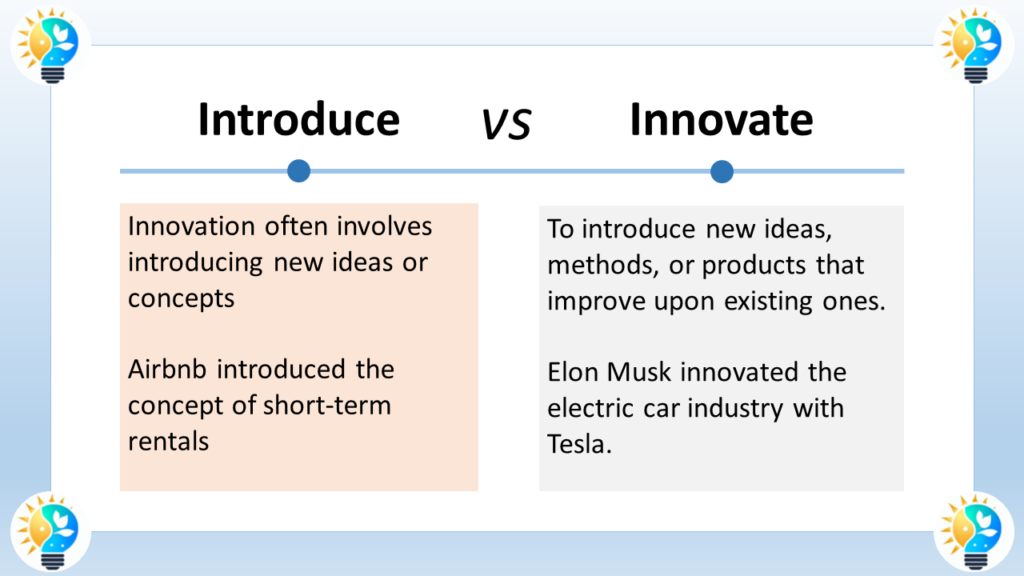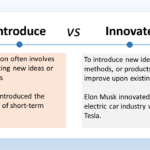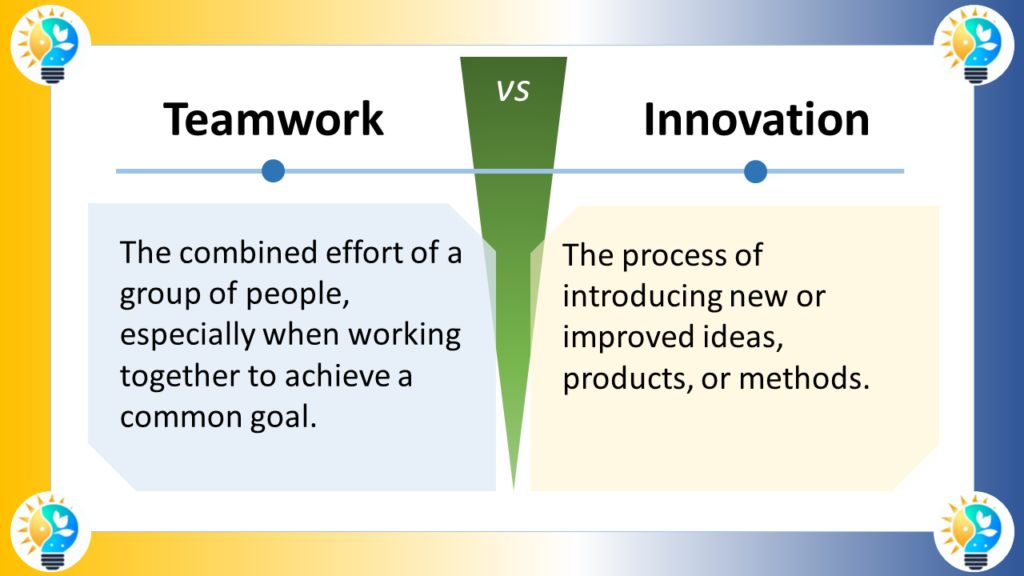Introducing involves presenting something new for the first time, while innovating involves improving upon existing ideas.
Introducing is often a one-time event, while innovating is an ongoing process.

Innovate and introduce are two terms that often go hand in hand, especially when it comes to the world of business and technology. While they may seem similar, they have distinct meanings and roles in the process of creating and bringing new products or services to market. In this article, we will explore the relationship between innovate and introduce, and provide some key insights into how they can be used effectively to drive growth and competitiveness.
Defining Innovation and Introduction
Before we dive into the relationship between innovate and introduce, it’s important to define each term.
Innovation refers to the creation of new ideas, products, services, or processes that add value and solve problems. It involves a combination of creativity, critical thinking, and collaboration to generate novel solutions that meet unmet needs or improve upon existing ones. Innovation can take many forms, from incremental improvements to game-changing breakthroughs.
Introduction, on the other hand, refers to the process of bringing a new product, service, or idea to market. It involves developing a go-to-market strategy, identifying target customers, and executing a plan to launch and promote the offering. Introduction is a critical component of the innovation process, as it is the point at which new ideas are validated and commercialized.
More Synonyms on innovation, innovate and innovative:
- Adapt
- Advance
- Change
- Create
- Cultivate
- Devise
- Develop
- Discover
- Disrupt
- Evolve
- Experiment
- Fashion
- Generate
- Imagine
- Initiate
- Introduce
- Invent
- Modernize
- Originate
- Pioneer
- Progress
- Prototype
- Radicalize
- Reform
- Reinvent
- Renew
- Revolutionize
- Restructure
- Set Trends
- Transform
- Upgrade

Innovation is considered as a driving force in progress.
It includes the introduction of novel ideas, methods, or products that bring positive change and advancement.
For more information about innovations, check our glossary
The Role of Innovation in Introduction
Innovation is a key driver of introduction, as it provides the raw material for new offerings. Without innovation, there would be no new products, services, or ideas to introduce to the market. Innovation helps companies stay competitive by continuously improving their offerings and meeting the changing needs of their customers.
However, innovation is only half of the equation. In order for innovation to have real impact, it must be effectively introduced to the market. This requires a deep understanding of customer needs, market trends, and competitive dynamics. Companies must also have the resources and capabilities to bring new offerings to market, including product development, marketing, sales, and distribution.
The Role of Introduction in Innovation
While innovation is a critical component of introduction, introduction also plays an important role in the innovation process. Introduction provides valuable feedback on the viability and desirability of new ideas, allowing companies to refine and improve their offerings based on real-world feedback.
Introduction also helps to validate the market demand for new ideas, providing a critical test of whether they are truly solving a problem or meeting a need. This feedback can be used to inform future innovation efforts, helping companies to focus on areas with the greatest potential for growth and impact.
Best Practices for Innovation and Introduction
To maximize the benefits of innovation and introduction, companies should adopt best practices in both areas.
Innovation best practices include:
- Encouraging a culture of creativity and experimentation
- Collaborating with customers and partners to identify unmet needs
- Leveraging emerging technologies and trends to drive innovation
- Focusing on solving real-world problems, rather than just creating new products or services
- Continuously iterating and refining ideas based on feedback
Introduction best practices include:
- Conducting thorough market research to identify target customers and market trends
- Developing a clear and compelling value proposition
- Building a strong go-to-market strategy that leverages the strengths of the company and its partners
- Measuring and tracking key performance indicators (KPIs) to evaluate the success of the introduction
- Continuously refining and improving the offering based on customer feedback and market trends
Conclusion
Innovation and introduction are closely related and interdependent processes that are critical to the success of any business or organization. By effectively combining innovation and introduction, companies can stay competitive, meet the changing needs of their customers, and drive growth and impact. By following best practices in both areas, companies can maximize the benefits of their innovation efforts and successfully bring new offerings to market.
References
- Christensen, C. M. (1997). The innovator’s dilemma: when new technologies cause great firms to fail. Harvard Business Press. The Innovator’s Dilemma: When New Technologies Cause Great Firms to Fail
- Kim, W. C., & Mauborgne, R. (2015). Blue ocean strategy: how to create uncontested market space and make the competition irrelevant. Harvard Business Review Press. Blue Ocean Strategy, Expanded Edition: How to Create Uncontested Market Space and Make the Competition Irrelevant
- Ries, E. (2011). The lean startup: how constant innovation creates radically successful businesses. Crown Business. https://www.amazon.com/Lean-Startup-Entrepreneurs-Continuous-Innovation/dp/0307887898
- Moore, G. A. (1991). Crossing the chasm: marketing and selling high-tech products to mainstream customers. HarperBusiness. https://www.amazon.com/Crossing-Chasm-Marketing-High-Tech-Mainstream/dp/0060517123


